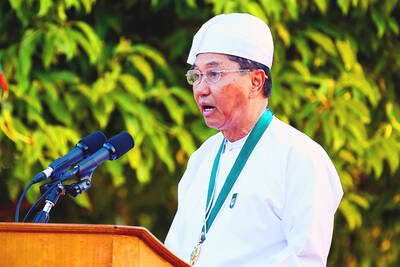India’s health minister believes late night TV makes for good birth control. Family planning experts fear he has simply run out of ideas for curbing India’s potentially catastrophic population growth.
It’s still unclear how serious Health and Family Welfare Minister Ghulam Nabi Azad was being when he made an impassioned plea this month for India to bring electricity to all its villages.
“When there is no electricity, there is nothing else to do but produce babies,” Azad said at a function to mark World Population Day. “If there is electricity in every village, then people will watch TV until late at night and then fall asleep. They won’t get a chance to produce children.”
Whether the minister was being flippant — he insists not — the issue of population growth in India, and the lack of success in controlling it, is deadly serious.
Since independence in 1947, the population has tripled to nearly 1.2 billion and now grows by 18 million every year.
India is expected to surpass China as the world’s most populous nation by 2028 and the population is predicted to top 1.5 billion by 2050.
This in a country where scarce resources already have millions competing for drinking water, sanitation, healthcare, education and jobs.
Family planning in India was held back for decades by the fallout from a disastrous sterilization program introduced in the mid-1970s by Sanjay Gandhi, son of then-prime minister Indira Gandhi.
The program targeted men with more than two children, but in order to meet quotas, government officials forced large numbers of unmarried, poor men to submit to vasectomies.
The policy was discontinued after less than two years, but its legacy was a long-lasting aversion to any government control program that even hinted at coercion.
That, and the democratic principles upon which the modern Indian state was founded, prevented any emulation of China’s one-child policy.
“In a democracy, the government has no business to order its people to have fewer children,” said Neeraj Singh, who runs a voluntary organization to educate young married couples about family planning. “It can only educate them to understand that the population issue needs urgent attention and that only citizens can do something to address the problem.”
However, such lessons are hard to get across in a country where family is paramount and where many still see children as an investment for their old age.
“Asking people to have fewer kids in India is just like telling them to change their religion. It is a very sensitive issue,” said Veena Rawat, who runs an all-women organization that advocates family planning.
Rawat believes the government has to provide specific incentives to make people sign up for programs.
“We could induce couples to have fewer children by providing monetary support or gifting them retirement benefits ... ways to make people who adhere to family planning feel special,” she said.
For Azad’s television theory, she has nothing but scorn.
“Such bizarre ideas are only suggested when the government has no intentions or is too scared to find solutions,” she said.
Shyama Kumari, a mother of five who distributes free condoms for a voluntary organization in the New Delhi slum where she lives, is an example of how disadvantaged Indian women who understand and appreciate family planning are often unable to practice it.
“Some women mock me and say I should give my husband a condom too, but he refuses to use it and believes children are God’s gift,” said Kumari, 32, who secretly terminated her sixth pregnancy. “One day, I suggested he undergo a vasectomy, but he abused me and said I was a witch, as no wife would ever take away her husband’s manhood.”
Kumari can also testify directly to the inadequacy of Azad’s concept of television as a libido reducer.
“I have a small TV in my home. My husband watches some shows in the evening, but we have sex at least three times a week,” she said.

Nauru has started selling passports to fund climate action, but is so far struggling to attract new citizens to the low-lying, largely barren island in the Pacific Ocean. Nauru, one of the world’s smallest nations, has a novel plan to fund its fight against climate change by selling so-called “Golden Passports.” Selling for US$105,000 each, Nauru plans to drum up more than US$5 million in the first year of the “climate resilience citizenship” program. Almost six months after the scheme opened in February, Nauru has so far approved just six applications — covering two families and four individuals. Despite the slow start —

MOGAMI-CLASS FRIGATES: The deal is a ‘big step toward elevating national security cooperation with Australia, which is our special strategic partner,’ a Japanese official said Australia is to upgrade its navy with 11 Mogami-class frigates built by Japan’s Mitsubishi Heavy Industries, Australian Minister for Defence Richard Marles said yesterday. Billed as Japan’s biggest defense export deal since World War II, Australia is to pay US$6 billion over the next 10 years to acquire the fleet of stealth frigates. Australia is in the midst of a major military restructure, bolstering its navy with long-range firepower in an effort to deter China. It is striving to expand its fleet of major warships from 11 to 26 over the next decade. “This is clearly the biggest defense-industry agreement that has ever

DEADLY TASTE TEST: Erin Patterson tried to kill her estranged husband three times, police said in one of the major claims not heard during her initial trial Australia’s recently convicted mushroom murderer also tried to poison her husband with bolognese pasta and chicken korma curry, according to testimony aired yesterday after a suppression order lapsed. Home cook Erin Patterson was found guilty last month of murdering her husband’s parents and elderly aunt in 2023, lacing their beef Wellington lunch with lethal death cap mushrooms. A series of potentially damning allegations about Patterson’s behavior in the lead-up to the meal were withheld from the jury to give the mother-of-two a fair trial. Supreme Court Justice Christopher Beale yesterday rejected an application to keep these allegations secret. Patterson tried to kill her

MILITARY’S MAN: Myint Swe was diagnosed with neurological disorders and peripheral neuropathy disease, and had authorized another to perform his duties Myint Swe, who became Myanmar’s acting president under controversial circumstances after the military seized power from the elected government of Aung San Suu Kyi more than four years ago, died yesterday, the military said. He was 74. He died at a military hospital in the capital, Naypyidaw, in the morning, Myanmar’s military information office said in a statement. Myint Swe’s death came more than a year after he stopped carrying out his presidential duties after he was publicly reported to be ailing. His funeral is to be held at the state level, but the date had not been disclosed, a separate statement from the